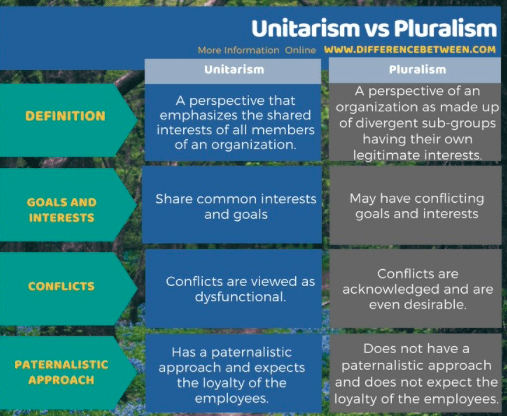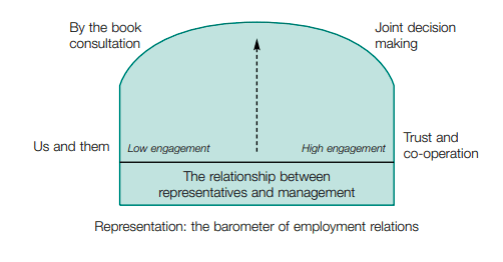Contemporary Developments in Employment Relations
The below is a module 2 submission for the CIPD Level 5 certification, kindly shared by one of our clients to help you on your own HR journey. Next up is, Contemporary Developments in Employment Relations.
Contents
Part One – Understand the nature and context of employment relations:
- 1.1 Analyse the intermediate nature of employment relations.
- 1.2 Compare and contrast unitarist and pluralist approaches to employment relations.
- 1.3 Asses a range of factors which impact on employment relations.
Part Two – Know about employment relations legislation:
- 2.1 Describe and critique the essential features of the contract of employment.
- 2.2 Identify and analyse the main sources of UK and EU employment relations law-making.
- 2.3 Explain the main developments in individual employment law.
- 2.4 Assess and advise on the purpose and scope of statutory trade union recognition.
Part Three – Understand contemporary developments in employee involvement and participation:
- 3.1 Explain the differences in employee involvement, participation and partnership
- 3.2 Compare and contrast union and non-union forms of employee representation.
- 3.3 Assess the link between employee voice and organisation performance.
Part Four – Know about different forms of conflict behaviour and dispute resolution:
- 4.1 Distinguish between conflict and misbehaviour, and between official and unofficial industrial action.
- 4.2 Assess contemporary trends in the types of conflict and industrial sanctions.
- 4.3 Explain what is required to advise, coach and guide line managers in the skills for effective grievance- and dispute-handling procedures.
- 4.4 Distinguish between third-party conciliation, mediation and arbitration.

7 Module Submissions
Check out the other 7 module submissions here:
- Module #1 Improving Organisational Performance
- Module #3 Employment Law
- Module #4 Developing Professional Practice
- Module #5 Business Issues and The Contexts of Human Resources
- Module #6 Using Information in Human Resources
- Module #7 Employee Engagement
- Module #8 Managing and Co-ordinating the Human Resources Function
Part One – Understand the Nature and Context of Employment Relations
1.1 Analyse the Indeterminate Nature of Employment Relations
I believe that employment relations is a balance of power and not an exact science. The CIPD (2019) explain that the term ‘Employee relations’ replaced ‘Industrial Relations’ to represent the change in the need for individual relationships to be considered as well as taking a collective approach.
It is no surprise that employment relations has evolved and will continue to do so when you look at internal and external factors that influence the way we perceive and implement it. According to Taylor and Woodhams (2016) there are two main definitions of employment relations; the first being around regulations and the second around relationships. An example that highlights the prominence of the regulatory side is evidenced by Gennard and Judge (2010, P225) who suggest that “The purpose of employment relations is to establish rules, regulations and agreements to regulate the employment relationship” and this can be seen in the form of company policies and processes, written contracts being agreed and signed, salaries being paid in exchange for work carried out but also in external forms such as the Equality Act 2010 brought into effect by the government.
The CIPD (2019) also suggest that the relationship side of employment relations is not about focusing on what everyone wants or needs, but what the individual wants and needs as each person has different requirements. Employment relations should be about building trust from the initial contact made, through their employment journey and until the day they leave the organisation.
1.2 Compare and Contrast Unitarist and Pluralist Approaches to Employment Relations
The difference between a unitarist and a pluralist approach to employment relations as suggested by Fox (1966) is that to have a unitarist approach, organisations are more likely to think about the shared interest of employees as well as the organisation. They are more likely to collaborate around the achievement of the goals and work together to get the final result so both parties benefit. CIPD (2016) use the analogy of a football team as they support each other both on and off the pitch to win the game and again this highlights that a unitarist approach work together as a team.
Fox (1966) also suggested that to have a pluralist approach is to recognise that whilst there may be commonalities in what all parties want to achieve there will be different demands made e.g. a company may want to reach a target profit of £500 million within five years where as an employee’s goal is to be promoted and obtain a 10% salary increase within five years; both monetary goals but for different reasons. The pluralist approach to employment relations suggests that employees do not need to show loyalty as it is not expected of them (Compare the Difference Between Similar Terms, 2011)
To highlight some of the main differences between unitarist and pluralist, please refer to the below diagram courtesy of (Compare the Difference Between Similar Terms, 2011). It is quite simplistic but I feel it gives a snap shot overview for ease.

1.3 Assess a Range of Factors Which Impact on Employment Relations
There are many factors that impact on employment relations, such as:
The Psychological Contract
I believe the psychological contract can have one of the biggest impacts during an employee’s career. If the employer and employee do not have similar values it could result in unnecessary conflict or at worst case, early departure from the organisation. According to the CIPD (2019) “The term ‘psychological contract’ refers to subjective expectations, beliefs and obligations, as perceived by the employer and the worker. This can be challenging if two managers are very different in the way they choose to run their team or just because of the diverse nature of the departments they oversee, I believe this is why most psychological contracts are largely based around the relationship the employee has with his or her line manager.
Economic Factors
There are many economic factors that may affect employment relations such as salaries, benefits, law enforcement, government rulings, unemployment and many more. Economics plays an important part of employment relations and Block, Berg and Belman (2004) suggest as a minimum, it is where an employee offers services in exchange for payment received.
Trade Union Involvement
Trade Unions play a large part in some organisations and although our industry changes have reduced their significance (The Economist, 2015) they still play a vital role in promoting equality for all to ensure the welfare of staff, ensure discrimination is not tolerated (Moeti-Lysson and Ongori, 2011) As well as having a positive impact on employment relations, trade union involvement can mean restrictions are put on employees if policies, processes or various agreements are put in place that they cannot deviate away from.
Part Two – Know About Employment Relations Legislation
2.1 Describe and Critique the Essential Features of the Contract of Employment
A contract of employment is a legally binding agreement that is enforceable by law between an organisation and employee. A contract of employment does not need to be in writing and can be verbal as long as acceptance is given to the initial offer. “In the UK, the term ‘employee’ is defined by the Employment Rights Act 1996 as an individual who has entered into or works under a contract of service or apprenticeship” as cited by Ayling and Suff (CIPD, 2019).
Contracts of employment are made up of two types of terms called Implied and Expressed.
Expressed terms are normally written but can be given verbally and do not solely need to be included in the contract; they are directly acknowledged by the employer and employee but elements of it can be presented in a staff handbook that sits in line with the contract. Expressed terms must meet the minimum legal requirements such as minimum wage and statutory holiday entitlement and payments linked to it.
Implied terms are words or statements that aren’t physically documented in the contract but it is assumed they are meant to be there e.g. the employer providing a safe working environment and equality of pay for all genders (CIPD, 2019). Trust, respect and development are also implied terms.
Between the implied and expressed terms of a contract, the essential features are generally made up of, who the contract is between, the place and hours of work, salary, job title, regulations around the company requirements and benefit entitlement. In my opinion, implied terms can be misunderstood. If the employee and employer have different goals, they could have varying views of a situation, benefit or policy, however, if all contracts had expressed terms listed as the majority, it could remove potential dispute or misunderstanding.
As of April 2020, all workers (not just direct employees of the company) will be entitled to written terms of employment (Acas.org.uk, 2019).
2.2 Identify and Analyse the Main Sources of UK and EU Employment Relations Law-Making

UK and European employment relations are regulated by institutions such as the European Courts of Justice (ECJ) and this was founded by six European states in 1957 (UK in a changing Europe, n.d.), however as cited by the Guardian, the UK didn’t join until 1973 (the Guardian, 2016). In conjunction with the ECJ, employment tribunals also help regulate the employment relations alongside organisations such as ACAS where factual information is given to both employees and employers to help them understand the rules and regulations around basic employment law.
There are three main sources of UK Employment Law and they are: Common Law, Statute and European Law (Tim-russell.co.uk, n.d.)
Common Laws consists of substantive law and procedural law. Substantive law is based around behaviours such as not being able to commit murder whereas procedural law is based on how things should be done (OpenLearn, n.d.). Common Laws are unwritten laws based on legal examples that are recognised by the courts. “Common law influences the decision-making process in unusual cases where the outcome cannot be determined based on existing statutes or written rules of law” (Investopedia, 2019)
Laws by Statute are laws created or changed by an act of Parliament. Before the law is passed a bill needs to be approved by the House of Commons, the House of Lords and it must have been approved by the monarch in current rule (UK Parliament, n.d.).
European Law “is a body of treaties, law and court judgments which operates alongside the legal systems of the European Union’s member states” (US Legal, 2019).
2.3 Explain the Main Developments in Individual Employment Law
I believe that individual employment law is any law that affects a relationship between an employee and employer.
There are lots of developments in individual employment law with a few being:
- The Equality Act 2010 – for organisations with over 250 employees, they are now obliged to publish their information on pay that all genders receive known as the Gender Pay Gap (CIPD, 2019)
- Shared Parental Leave (SPL) – In April 2018, when certain criteria is met, SPL can be claimed and paid. SPL is not limited to heterosexual couples but applies to all birth or adoptive parents, “whether it is by birth adoption or surrogacy” (Bircham, Dyson and Bell, n.d.)
- The Taylor Review – A review undertaken by Matthew Taylor, chief executive of the Royal Society of Arts, expressed the want to achieve a result where “All work in the UK economy should be fair and decent with realistic scope for development and fulfilment” (Taylor, 2017). Taylor understood that individuals worked differently so devised a seven step plan that highlighted areas such as the need for “contractors” to be entitled to request direct employment after a term of 12 months with the same employer
- Tribunal fees – In July 2017 tribunal fees were stopped after they were deemed to be “unlawful and unconstitutional” by the Supreme Court (Toureille, 2018). Understandably, if employees feel aggrieved, they are more likely to raise a case if they don’t have to raise the money upfront.
- In an article published by People management, Andrew Willis, head of legal at CIPD HR-inform stated “Without the requirement to pay a fee to have a case heard, more employers are likely to face challenges against employment practices, such as wage deductions, even where the overall financial loss to the individual is small,” (Toureille, 2018).
“Trade unions are groups of employees who join together to maintain and improve their conditions of employment” (UNISON National, n.d.) Trade union members benefit from the support of the actual union in the form of representation in employment tribunals, redundancies but also the guidance and advice on employment rights in the workplace and general work related issues.
Trade Unions can be recognised or non-recognised but according to the CIPD (2019) “A trade union is recognised when it is:
- independent, and
- recognised by an employer, or two or more associated employers, for the purpose of collective bargaining.
Where trade unions come to a mutual agreement with the organisation of their own accord, this is known as voluntary recognition. Voluntary recognition is where the trade union asks the employer in writing if they agree to recognise them voluntary and identify who will be represented by the union known as the bargaining unit. This request is made under schedule A1 of the Trade Union and Labour Relations Act 1992.
Recognised trade unions can negotiate on the employees behalf for such things as pay and/or holiday terms etc. and this is known as collective bargaining that can only be carried out if there is clarity around both parties mutually recognising each other (CIPD, 2019)
However, a trade union can request recognition if not voluntarily agreed and this is known as enforced statutory recognition. (CIPD, 2019) When a union applies for statutory recognition it must apply to the Central Arbitration Committee in order to achieve this and where it is granted, the trade union and organisation have 30 workings days to start the collective bargaining.
Part Three – Understand Contemporary Developments in Employee Involvement and Participation

3.1 Explain the Differences in Employee Involvement, Participation and Partnership
Employee involvement is the voice employees have so they can communicate with their employer and express their wishes, opinions, suggestions but also their concerns. By giving employees a voice and asking them to willingly be involved, an organisation can help employees feel more invested, and therefor they may have a higher job satisfaction where they are recognised as a positive person that may create more opportunities for them (CIPD, 2019).
Ways to get employees involved could be by providing a mentoring scheme, provide a suggestions scheme giving employees the input into various parts of the business. Send regular employee surveys asking for their honest opinion or provide a suggestion box as some people don’t like to give ideas due to fear or rejection or just because they like to remain anonymous (Kappel, 2018).
Employee participation can be seen when employees actively take part in a group event. In my organisation we hold monthly employee forums where the representatives act as the voice of all the other employees. They listen to ideas, comments and suggestions then work with leaders to make changes that benefit the employees in a positive way. Joint consultations are another way where employee participation can happen and these can be seen in unionised or non-union organisations. In a unionised environment, these consultations are normally held where both parties have a common interest in the end goal of negotiation.
Employee partnership can form in ways such as direct partnership where the employee has more of an impact on the decision making and can therefore influence it more directly. Corporate governance is a recognised method where companies are required to ensure that the organisation’s employees are represented at all levels, especially board level.
In my opinion, partnership is when both parties show a joint commitment and work together for the success of the organisation they are part of.
In all of the above if the employee is involved as much as practicable, they will generally go the extra mile as they are very clear on what needs to be done to reach goals, they will in turn achieve a greater job satisfaction, be more productive and remain healthy (both physically and mentally)
3.2 Compare and Contrast Union and Non-Union Forms of Employee Representation
Employee representation can be given as an individual or in a group. It can be carried out by union or non-union organisations offering a formal or informal route for communication to take place in a two way stream. Both representations have similarities and differences but one thing remains clear to me, they both offer the employee(s) a chance to voice their opinions, air their views and have input to outcomes that may have an effect on them.
Individuals may want support if they feel the need to raise a grievance and all employees have the statutory right for either a colleague (non-union representation) or trade union representative to be present at meetings (Acas.org.uk, 2014).
Group issues can be dealt with through employee forums where the representatives are nominated employees who will listen to the wants and needs around ‘smaller matters’. For more legally binding issues such as redundancy, a trade union representative could be used to ensure the best deal is achieved for all parties concerned, ensuring a fair process is maintained throughout. Where a trade union representative is used for group issues, this is classed as collective bargaining and will generally involve more senior members of staff (Acas.org.uk, 2014)
I believe participation, involvement and partnership can strengthen the employee voice and alleviate the need for union representation in some situations however, where difficult or sensitive circumstances present themselves such as pay increases or unfair treatment, I believe they may not hold enough influence and a trade union representative could achieve better results for individuals involved.
3.3 Assess the Link Between Employee Voice and Organisation Performance
Employee voice mechanisms can positively impact on organisation performance because forms of it, offer structure, fairness and allow all employees to communicate and negotiate efficiently. By giving employees a voice through being represented, they are more likely to voice their opinion honestly and without fear of being criticised. Employees are more likely to participate in conversations where other employees are managing the discussions, such as employee forums. (Acas.org.uk, 2014)
The below diagram displays the balance of positive results when you do and don’t give employees a voice. (Acas.org.uk, 2014)

Employers and employees should openly communicate on a two way basis and managers should have one to one conversations with their team members regardless of what other forums or representations are available.
The more an employee feels they can talk freely and without being reprimanded, it is suggested the happier they are more likely to be and employees that have a good relationship with their colleagues and line manager are more likely to be motivated in general. Although it is good to talk managers should be very mindful that they must not undermine or interfere with any formal representation already in progress (Acas.org.uk, 2014).
Part Four – Know About Different Forms of Conflict Behaviour and Dispute Resolution
4.1 Distinguish Between Conflict and Misbehaviour, and Between Official and Unofficial Industrial Action
In my opinion conflict in the workplace happens and can manifest itself in many ways such as job roles being unclear, lack of communication and anything where two or more people can’t agree. It can be between an employee and manager, two employees at the same level or a group of employees. Conflict can be disruptive, hurtful and costly so it is best, where appropriate, to deal with it immediately.
Misbehaviour however is knowingly doing something by choice, that is not acceptable in the workplace and that may cause disruption to something such as a process or system.
If not dealt with or managed correctly, both conflict and misbehaviour can lead to official or unofficial industrial action.
Official industrial strike action is considered to be where any paid work is purposely stopped by a collection of employees (CIPD, 2019). In order to make the strike official, a legal ballot (vote) must be raised. All union members are involved and it is only once the outcome shows a majority vote that the strike can go ahead (GOV.UK, n.d.). Once a decision is reached, employers must be given at least two weeks’ notice. Union members who choose to take part in a strike cannot be dismissed for taking part if it is properly organised by legal ballot.
Unofficial strike action is “any form of industrial action, including a strike, which is not authorised or endorsed by a trade union, will generally be ‘unofficial.’” (CIPD, 2019) and any union member that takes part in an action of this type can be dismissed by the organisation (GOV.UK, n.d.).
Unofficial strike action is “any form of industrial action, including a strike, which is not authorised or endorsed by a trade union, will generally be ‘unofficial.’” (CIPD, 2019) and any union member that takes part in an action of this type can be dismissed by the organisation (GOV.UK, n.d.).
4.2 Assess Contemporary Trends in the Types of Conflict and Industrial Sanctions
It is suggested that conflict is more likely to occur when there is a clash of personalities in the workplace and also when there is a lack of clarity around targets to be achieved, general guidelines and rules such as an absence policy. Conflict can appear between work colleagues, a line manager and direct report or employee(s) and individual(s) inside or outside of the workplace; if the issue is not dealt with quickly and effectively it could escalate to some kind of action being taken (CIPD, 2019).
Conflict can result in industrial action and like everything, trends will undoubtedly appear. When the tribunal fees were eradicated and employees were able to raise a claim without the initial cost; the amount of employees who claimed for unfair dismissal rose by 65.5% in 2018 when compared to 2017 as recorded by LAW (Hannan, 2019).
Claims raised for disability discrimination and in particular, mental health have seen a significant increase of 37% when compared from 2017 to 2018 and Health and Safety Executive figures found that there were “26.8 million days lost through work related ill health” (Hannan, 2019)
More people seem to be taking industrial action and some say this is due to the change in social values. Individuals expect change and to be listened to. They are prepared to take a more subtle approach such as lunchtime protests in hope to get results.
United Utilities employees went on strike in 2018 as they were not happy with their pay or working conditions. The employees first actioned a mini strike where they didn’t complete their overtime but then went on to unionised strike where approximately 1,500 employees took part (Scott, 2018).
4.3 Explain What is Required to Advise, Coach and Guide Line Managers in the Skills for Effective Grievance and Dispute-Handling Procedures

Depending on the level of the grievance or dispute, managers will need different skills, development and training. In the main, most managers will need to be able to actively listen to people and ask appropriate open questions if there is a need to delve deeper into a situation where understanding is not first apparent. They need to extract all the facts so investigations can be done if necessary and they should be able to remain impartial though out; if they are unable to remain impartial, they should recognise this and ask for another manager to take over.
Managers need to understand that everyone is very different so they may need to learn about unconscious bias so they are aware of theirs. They should be able to empathise with the individual(s) but understand that there is a professional line that must not be crossed. They should be able to keep calm and focus on the issue at hand whilst not letting conversations get out of control or too heated.
Managers should have the knowledge around policies and processes that are affecting or may affect outcomes. They should be trained in having difficult conversations so they don’t make situations worse. Understand when they are not making progress with an individual or situation and the need to turn an informal process into a formal one (Acas.org.uk, 2014).
4.4 Distinguish Between Third-Party Conciliation, Mediation and Arbitration
Third party conciliation or ADR (alternative dispute resolution) is voluntary but focuses around issues of employment rights and is presented to an employment tribunal. An independent impartial person is appointed and listens to all concerns, evaluates the evidence provided and offers their opinion or proposal to resolve the matter. Parties involved will then accept or decline what has been proposed as it is their decision (JMW Solicitors LLP, n.d.).
Mediation is an informal and voluntary process where an impartial individual tries to help re-establish a work based relationship by finding common ground on highlighted differences that can be worked on. Each person agrees to enter into a confidential conversation with the mediator, gives an overview of their issue(s) with a view to having a balanced conversation with the other person. The mediator would encourage the individuals involved, to reach an agreement they were happy to commit to but would only guide and not enforce anything. Mediation is normally the last informal process in conflict resolution (CIPD, 2019).
Arbitration is similar to mediation and conciliation as it is entered into voluntarily by the parties involved but, whereas mediation and conciliation offer advice, arbitration gives a decision. All parties involved commit beforehand to accepting the decision made by the arbitrator after their opinions and evidence have been presented. Arbitration is legally binding and although it is not a tribunal process, if the employee does not agree with the decision made, they are fully entitled to raise a case at an employment tribunal (GOV.UK, n.d.).
References
- Acas.org.uk. (2014). Representation at work. [online] Available at: https://www.acas.org.uk/acas-guides-on-trade-union-and-employee-representation [Accessed 14 Nov. 2019].
- Acas.org.uk. (2014). Managing Conflict at Work. [online] Available at: https://www.acas.org.uk/dealing-with-workplace-problems [Accessed 15 Nov. 2019].
- Acas.org.uk. (2019). Employment Law UK & Employment Law Advice | Acas. [online] Available at: https://www.acas.org.uk/advice [Accessed 19 Nov. 2019].
- Block, R., Berg, P. and Belman, D. (2004). The Economic Dimension of the Employment Relationship. [online] Msu.edu. Available at: https://tech.msu.edu/about/guidelines-policies/afs-retirement/ [Accessed 4 Nov. 2019].
- Bircham, Dyson and Bell (n.d.). Family leave and pay. [online] Stonewall. Available at: https://www.stonewall.org.uk/help-advice/parenting-rights/family-leave-and-pay [Accessed 14 Nov. 2019].
- CIPD. (2019). Employee Voice | Factsheets | CIPD. [online] Available at: https://www.cipd.co.uk/knowledge/fundamentals/relations/communication/voice-factsheet [Accessed 14 Nov. 2019].
- CIPD. (2019). Employee Relations | Factsheets | CIPD. [online] Available at: https://www.cipd.co.uk/knowledge/fundamentals/relations/employees/factsheet [Accessed 31 Oct. 2019].
- CIPD. (2019). Contracts of Employment | Factsheets | CIPD. [online] Available at: https://www.cipd.co.uk/knowledge/fundamentals/emp-law/terms-conditions/contracts-factsheet [Accessed 6 Nov. 2019].
- Cipd.co.uk. (2019). Getting under the skin of conflict: Tracing the experiences of employees. [online] Available at: https://www.cipd.co.uk/Images/getting-under-skin-workplace-conflict_2015-tracing-experiences-employees_tcm18-10800.pdf [Accessed 18 Nov. 2019].
- CIPD. (2019). Trade Union Recognition & Industrial Action Q&As | CIPD. [online] Available at: https://www.cipd.co.uk/knowledge/fundamentals/relations/employees/trade-unions-questions [Accessed 15 Nov. 2019].
- CIPD. (2019). Workplace Mediation | Factsheets | CIPD. [online] Available at: https://www.cipd.co.uk/knowledge/fundamentals/relations/disputes/mediation-factsheet [Accessed 18 Nov. 2019].
- CIPD. (2019). Employment Law Updates UK | CIPD. [online] Available at: https://www.cipd.co.uk/knowledge/fundamentals/emp-law/about/legislation-updates [Accessed 14 Nov. 2019].
- CIPD. (2019). Trade Union Recognition & Industrial Action Q&As | CIPD. [online] Available at: https://www.cipd.co.uk/knowledge/fundamentals/relations/employees/trade-unions-questions [Accessed 14 Nov. 2019].
- CIPD. (2019). Employment Law UK, EU and Brexit | Factsheets | CIPD. [online] Available at: https://www.cipd.co.uk/knowledge/fundamentals/emp-law/about/eu-impact-factsheet [Accessed 14 Nov. 2019].
- Compare the Difference Between Similar Terms. (2011). Difference Between Unitarism and Pluralism | Compare the Difference Between Similar Terms. [online] Available at: https://www.differencebetween.com/difference-between-unitarism-and-vs-pluralism/#Unitarism%20vs%20Pluralism%20in%20Tabular%20Form [Accessed 1 Nov. 2019].
- Fox, A. (1966) Industrial sociology and industrial relations. Donovan Commission Research Report, No.3. London: HMSO.
- GOV.UK. (n.d.). Solve a workplace dispute. [online] Available at: https://www.gov.uk/solve-workplace-dispute/mediation-conciliation-and-arbitration [Accessed 18 Nov. 2019].GOV.UK. (n.d.). Taking part in industrial action and strikes. [online] Available at: https://www.gov.uk/industrial-action-strikes/holding-a-ballot [Accessed 15 Nov. 2019].
- Gennard, J. and Judge, G. (2010) Managing employment relations. 5th ed. London: Chartered Institute of Personnel and Development.
- Hannan, M. (2019). Employment tribunal claims rise after abolishing ‘illegal’ fees. [online] The National. [Accessed 15 Nov. 2019].
- Investopedia. (2019). Common Laws Are Unwritten Legal Precedents That Guide Court Decisions. [online] Available at: https://www.investopedia.com/terms/c/common-law.asp [Accessed 8 Nov. 2019].
- JMW Solicitors LLP. (n.d.). Conciliation. [online] Available at: https://www.jmw.co.uk/services-for-business/commercial-litigation-dispute-resolution/alternative-dispute-resolution/conciliation [Accessed 18 Nov. 2019].
- Kappel, M. (2018). How To Encourage Employee Involvement In Decision Making. [online] Forbes.com. Available at: https://www.forbes.com/sites/mikekappel/2018/04/04/how-to-encourage-employee-involvement-in-decision-making/#22ac23676561 [Accessed 14 Nov. 2019].
- OpenLearn. (n.d.). Judges and the law. [online] Available at: https://www.open.edu/openlearn/society-politics-law/judges-and-the-law/content-section-7.2 [Accessed 14 Nov. 2019].
- Scott, K. (2018). United Utilities employees strike in dispute over pensions. [online] Employee Benefits. Available at: https://employeebenefits.co.uk/issues/march-2018/united-utilities-strike-pensions/ [Accessed 17 Nov. 2019].
- Taylor, S. and Woodhams, C. (2016). Human Resource Management: People and Organisations. 2nd ed. London: Chartered Institute of Personnel and Development, p.100.
- Toureille, C. (2018). Outstanding tribunal claims up 130 per cent since fees were abolished. [online] People Management. Available at: https://www.peoplemanagement.co.uk/news/articles/outstanding-tribunal-claims-up-130-percent-since-fees-abolished [Accessed 14 Nov. 2019].
- The psychological contract. (2019). [ebook] London: The Chartered Institute of Personnel and Development. Available at: https://www.cipd.co.uk/knowledge/fundamentals/relations/employees/psychological-factsheet [Accessed 4 Nov. 2019].
- The Economist. (2015). Why trade unions are declining. [online] Available at: https://www.economist.com/the-economist-explains/2015/09/29/why-trade-unions-are-declining [Accessed 4 Nov. 2019].
- Taylor, M. (2017). Good Work: The Taylor Review of Modern Working Practices. [online] Assets.publishing.service.gov.uk. Available at: https://assets.publishing.service.gov.uk/government/uploads/system/uploads/attachment_data/file/627671/good-work-taylor-review-modern-working-practices-rg.pdf [Accessed 14 Nov. 2019].
- Tim-russell.co.uk. (n.d.). A GUIDE TO UK EMPLOYMENT LAW. [online] Available at: https://www.tim-russell.co.uk/upimages/Employment%20Guide.pdf [Accessed 6 Nov. 2019].
- The Guardian. (2016). A timeline of Britain’s EU membership in Guardian reporting. [online] Available at: https://www.theguardian.com/politics/2016/jun/25/a-timeline-of-britains-eu-membership-in-guardian-reporting [Accessed 19 Nov. 2019].
- UNISON National. (n.d.). About trade unions | What we do | UNISON National. [online] Available at: https://www.unison.org.uk/about/what-we-do/about-trade-unions/ [Accessed 14 Nov. 2019].
- UK Parliament. (n.d.). What is an Act of Parliament?. [online] Available at: https://www.parliament.uk/about/how/laws/acts/ [Accessed 14 Nov. 2019].
- UK in a changing Europe. (n.d.). Does EU law take precedence over UK law? – UK in a changing Europe. [online] Available at: https://ukandeu.ac.uk/the-facts/does-eu-law-take-precedence-over-uk-law/ [Accessed 14 Nov. 2019].
- US Legal, I. (2019). European Union Law Law and Legal Definition | USLegal, Inc.. [online] Definitions.uslegal.com. Available at: https://definitions.uslegal.com/e/european-union-law/ [Accessed 14 Nov. 2019].
Bibliography
- Acas.org.uk. (2014). Representation at work. [online] Available at: https://www.acas.org.uk/acas-guides-on-trade-union-and-employee-representation [Accessed 14 Nov. 2019].
- Bircham, Dyson and Bell (n.d.). Family leave and pay. [online] Stonewall. Available at: https://www.stonewall.org.uk/help-advice/parenting-rights/family-leave-and-pay [Accessed 14 Nov. 2019].
- CIPD. (2019). Trade Union Recognition & Industrial Action Q&As | CIPD. [online] Available at: https://www.cipd.co.uk/knowledge/fundamentals/relations/employees/trade-unions-questions [Accessed 14 Nov. 2019].
- CIPD. (2019). Employment Law UK, EU and Brexit | Factsheets | CIPD. [online] Available at: https://www.cipd.co.uk/knowledge/fundamentals/emp-law/about/eu-impact-factsheet [Accessed 14 Nov. 2019].
- CIPD. (2019). Employment Law UK, EU and Brexit | Factsheets | CIPD. [online] Available at: https://www.cipd.co.uk/knowledge/fundamentals/emp-law/about/eu-impact-factsheet [Accessed 14 Nov. 2019].
- CIPD. (2019). Employment Law Updates UK | CIPD. [online] Available at: https://www.cipd.co.uk/knowledge/fundamentals/emp-law/about/legislation-updates [Accessed 14 Nov. 2019].
- CIPD. (2019). Employee Relations | Factsheets | CIPD. [online] Available at: https://www.cipd.co.uk/knowledge/fundamentals/relations/employees/factsheet [Accessed 31 Oct. 2019].
- Compare the Difference Between Similar Terms. (2011). Difference Between Unitarism and Pluralism | Compare the Difference Between Similar Terms. [online] Available at: https://www.differencebetween.com/difference-between-unitarism-and-vs-pluralism/#Unitarism%20vs%20Pluralism%20in%20Tabular%20Form [Accessed 1 Nov. 2019].
- Human Resource Management: People and Organisations. (2016). 2nd ed. London: Chartered Institute of Personnel Development, pp.99 – 120.
- Moeti-Lysson, J. and Ongori, H. (2011). EFFECTIVENESS OF TRADE UNIONS IN PROMOTING EMPLOYEE RELATIONS IN ORGANISATIONS.. [online] ResearchGate. Available at: https://www.researchgate.net/publication/237842828_EFFECTIVENESS_OF_TRADE_UNIONS_IN_PROMOTING_EMPLOYEE_RELATIONS_IN_ORGANISATIONS/link/00b7d51be6a6370f7d000000/download [Accessed 4 Nov. 2019].
- OpenLearn. (n.d.). Judges and the law. [online] Available at: https://www.open.edu/openlearn/society-politics-law/judges-and-the-law/content-section-7.2 [Accessed 14 Nov. 2019].
- S-cool.co.uk. (n.d.). Trade Unions | S-cool, the revision website. [online] Available at: https://www.s-cool.co.uk/a-level/business-studies/people-in-the-workplace/revise-it/trade-unions [Accessed 14 Nov. 2019].
- Scott, K. (2018). United Utilities employees strike in dispute over pensions. [online] Employee Benefits. Available at: https://employeebenefits.co.uk/issues/march-2018/united-utilities-strike-pensions/ [Accessed 17 Nov. 2019].
- Sisson, K. (2008). Putting the record straight: Industrial relations and the employment relationship. [online] Warwick.ac.uk. Available at: https://warwick.ac.uk/fac/soc/wbs/research/irru/wpir/wpir_88.pdf [Accessed 31 Oct. 2019].
- Taylor, M. (2017). Good Work: The Taylor Review of Modern Working Practices. [online] Assets.publishing.service.gov.uk. Available at: https://assets.publishing.service.gov.uk/government/uploads/system/uploads/attachment_data/file/627671/good-work-taylor-review-modern-working-practices-rg.pdf [Accessed 14 Nov. 2019].
- Tim-russell.co.uk. (n.d.). A GUIDE TO UK EMPLOYMENT LAW. [online] Available at: https://www.tim-russell.co.uk/upimages/Employment%20Guide.pdf [Accessed 6 Nov. 2019].
- UK in a changing Europe. (n.d.). Does EU law take precedence over UK law? – UK in a changing Europe. [online] Available at: https://ukandeu.ac.uk/the-facts/does-eu-law-take-precedence-over-uk-law/ [Accessed 14 Nov. 2019].
- US Legal, I. (2019). European Union Law Law and Legal Definition | USLegal, Inc.. [online] Definitions.uslegal.com. Available at: https://definitions.uslegal.com/e/european-union-law/ [Accessed 14 Nov. 2019].
- Widdowson, D. (2016). Trade Unions. CIPD 119 Trade Unions. Available at: https://www.cipd.co.uk/podcasts/trade-unions [Accessed 31 Oct. 2019].




